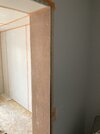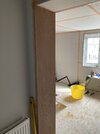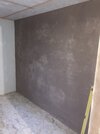Hello spreads
had my first proper go at plastering today (have done repairs and bits and pieces before)
it’s come out smooth and good enough but there are some low spots where the trowel has depressed in and out when troweling
My question is, can I just plaster straight on to it in the morning whilst it’s still drying out or will it need to fully dry and seal?
Thanks
had my first proper go at plastering today (have done repairs and bits and pieces before)
it’s come out smooth and good enough but there are some low spots where the trowel has depressed in and out when troweling
My question is, can I just plaster straight on to it in the morning whilst it’s still drying out or will it need to fully dry and seal?
Thanks




